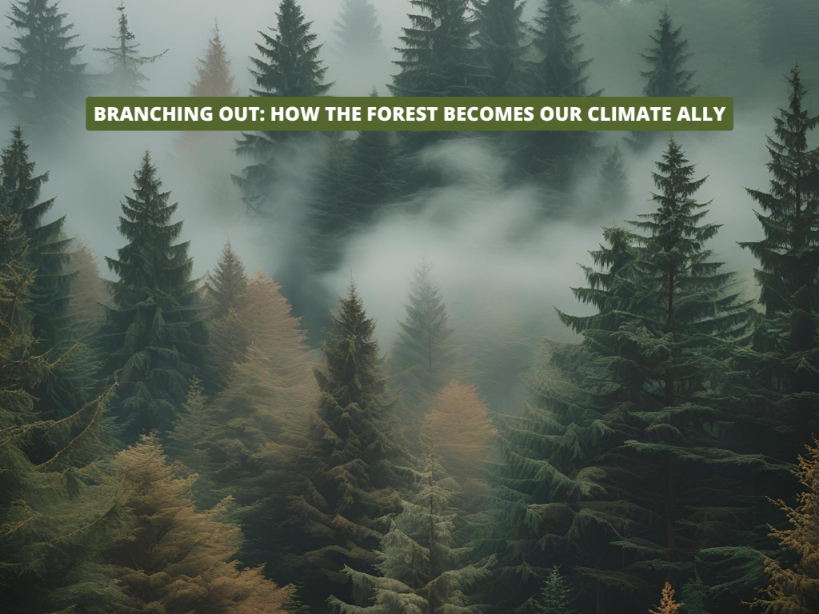Branching Out: How the Forest Becomes Our Climate Ally
This content is being republished with the consent of Fisher International and ResourceWise. Read more about Wood products and Renewables at ResourceWise. Sep 21, ‘23
When it comes to tackling climate change, it’s time to turn our attention to the unsung hero of sustainability – the forest. In a world that’s racing towards renewable energy sources, wood products have emerged as a surprising frontrunner in the fight against climate change. These humble forest-derived materials play a pivotal role in helping us achieve our climate goals. So, what’s changed in the world of forest products during this era of sustainability, and how do they fit into our transition towards a greener future?
The answer begins right where it all starts – the forest itself. Forests, with their incredible carbon storage potential, are key players in our battle against climate change. However, carbon storage in forests goes beyond just the towering trees. Let’s dive into the world of forest carbon storage and discover the five vital aspects that make it all happen.
1. Dead Wood: The Silent Heroes
Even fallen and decaying trees contribute significantly to carbon storage. As they decompose, the carbon they contain seeps into the soil, nourishing other plants and ecosystems. It’s a natural recycling system within the forest.
2. Biomass Above and Below Ground: More Than Meets the Eye
Above-ground biomass includes everything from trees to shrubs, while below-ground biomass covers the intricate root systems. Carbon resides in every part of these plants, from their leaves and branches to their roots, sustaining a complex cycle of growth and decay.
3. Tree Litter: Nature’s Rapid Recycler
Leaves, twigs, and needles, collectively known as tree litter, may seem fleeting, but they have a crucial role in the carbon cycle. They continuously fall and decompose, returning their stored carbon to the soil.
4. Soil: The Earth’s Carbon Vault
Soil serves as the largest carbon store within a forest ecosystem. As plant matter decays, it enriches the soil with carbon. This nutrient-rich soil then nourishes new trees and vegetation, forming a cycle of life and storage.
5. Harvested Wood: A Surprising Hero
Surprisingly, wood products like furniture and flooring offer long-term carbon storage potential. In many cases, they outlast trees and other natural forest stores, making them a valuable asset in our fight against climate change.
As the world shifts towards renewable resources, we can expect to
see even more innovation in wood products. This innovation will further enhance their capacity for long-term carbon storage, weaving them seamlessly into the fabric of sustainability initiatives.
But what can this breakdown of forest products teach us about carbon storage in forests? It challenges the assumption that older trees are always better carbon stores. Younger trees, it turns out, are more efficient at absorbing atmospheric carbon. This suggests that encouraging the growth of younger trees could boost carbon storage potential.
However, this doesn’t mean we should rush to cut down older forests. The forestry industry must balance the efficiency of younger trees with the importance of preserving untouched forests. It’s a delicate dance between growth and conservation.

To shed more light on the issue, consider the International Sustainable Forestry Coalition (ISFC), a group of global forestry companies dedicated to sustainable practices. Their mission includes promoting sustainable forestry practices and supporting the transition to a circular bioeconomy. By improving growth and harvesting methods and reducing wood waste, the ISFC aims to achieve a healthy forestry industry without sacrificing untouched forests.
Now, let’s talk about the bigger picture in wood products and carbon. Harvested wood plays a crucial role in climate goals, not only by prolonging carbon storage but also by providing an eco-friendly alternative to carbon-intensive materials like plastics and concrete.
As technology advances and society shifts towards sustainability, wood products are becoming indispensable. They offer solutions in everything from insulation to building materials. Recognizing the value of carbon storage across the entire forest products value chain can revolutionize how we approach these resources. It’s a collaborative effort, as highlighted by the ISFC, that involves forestry companies, harvesters, scientists, and policymakers alike.
The path to carbon neutrality is within reach, and the foundation has already been laid. It’s time to take action. So, whether it’s in your furniture, your flooring, or your walls, remember that the forest plays a pivotal role in the fight against climate change.
Coniferous – Crafting Sustainability, One Tree at a Time.


